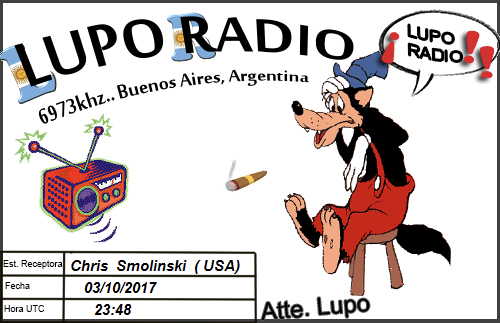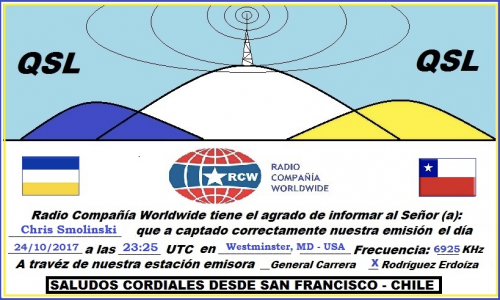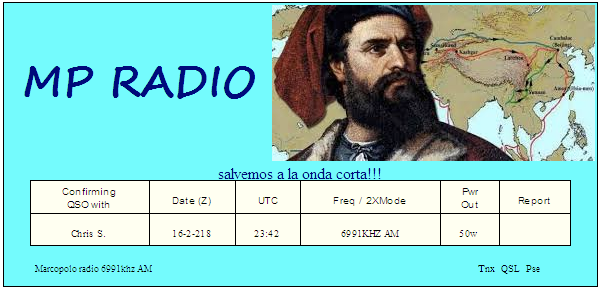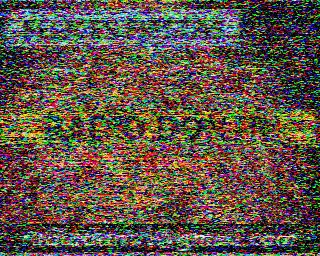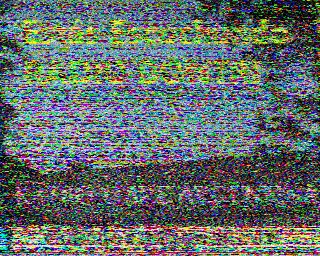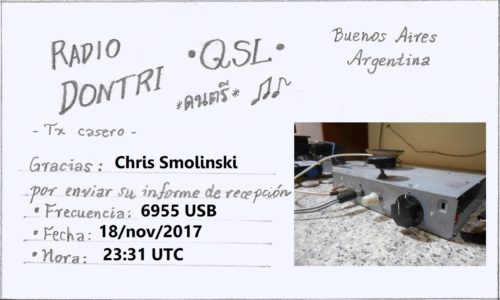Many thanks to SWLing Post contributor, Chris Smolinski, who shares the following guest post. Note that this post has also been published on Chris’ excellent blog, Radiohobbyist.org:
Listening To Pirate Radio Stations from South America
by Chris Smolinski
Looking for a new DX challenge? In addition to shortwave pirate stations in the USA, and Europe (Europirates as we call them), there’s a relatively new group of pirate radio stations being heard in North America, those from South America.
It’s really only been the previous year that we’ve confirmed that there’s a significant number of pirate radio stations in South America that can be received here. Radio Pirana has been known for some time, and I believe thee were a few reports of it, and at least one other station that I cannot remember the name of, but that’s about it. For years there have been logs of very weak UNID stations heard on the 43 meter band (6800-7000 kHz), presumed to be pirates of some sort, and it is possible some of these were South American pirates.
Most of these stations use homemade transmitters, often of the “Lulu” design, with a IRF510 or similar MOSET RF final stage. That means they are generally in the 15 or 20 watt carrier range, although some are higher power. That also means that unless otherwise noted, all of these stations use AM mode, and in general the frequency is highly variable, easily varying 100 Hz or more from night to night, or even during transmissions.
One important caveat: Since most of these stations use relatively low power, and due to the long distances involved, signal levels are generally weak, although occasionally when conditions are excellent (especially if there’s grayline propagation), they can put in stronger signals. I am fortunate to live in a rural area with relatively low noise/RFI levels, and have several high end receivers and large antennas. My primary setup for catching these stations is a netSDR receiver and a 670 foot Sky Loop antenna. You’re going to want to use the best receiver and antenna you can for catching these stations, you’re not likely to have good (or any) results with a portable SW radio, RTL dongle, or small/indoor antenna. Also, I record the entire 43 meter band nightly on my netSDR, and then go through the recordings each morning. This lets me catch stations that may only appear for a brief period of time. That said, you can still hear them with a reasonable HF setup, although it may take persistence, checking each night, until conditions permit reception.
It’s well worth checking the Latin American Pirate logging forum on the HF Undergroundwebsite, to see what is presently being heard. The HF Underground is the best way to keep up to date with the hobbyist radio scene in general, with dedicated forums for North American Pirates, Europirates, and of course radio in general.
And for those of you into collecting QSLs – many of these stations are reliable QSLers!
In general, the easiest station to hear is Lupo Radio from Argentina. It is on the air most evenings on 6973 kHz in AM mode. At least at my location, it puts in the strongest and most reliable signal. Usually in the SIO 222 to 333 range, sometimes stronger. There are frequent IDs. I use Lupo Radio as a “beacon” to gauge how good conditions are to South America on 43 meters.
Another station that is often on the air is RCW – Radio Compañía Worldwide from Chile. They use 6925.13 kHz, and their carrier is more stable and usually on this offset frequency, which makes it easier to determine that it’s likely you’re hearing them vs a US pirate station.
New to the scene is Radio Marcopolo on 6991 kHz.
Also new to the scene is an as yet UNID pirate from South America on 6934.9 kHz. I have received them for several weeks now in the local evenings, usually starting around the 2300-0300 UTC window. They put in a respectable signal (relatively speaking), strong enough for Shazam to ID songs. They have frequent breaks in their transmission, with the carrier often going off and on many times during a broadcast. They also occasionally transmit audio test tones, and sometimes seem to relay audio from licensed stations in Argentina such as Radio El Mundo. This could be someone testing a new transmitter? A new mystery to solve!
Radio Dontri is somewhat unique in that they use USB mode, on 6955 kHz. They also send SSTV, which is sometimes easier to receive than music, and helps to verify that you’re actually hearing them, vs a US pirate on 6955. They tend to drift a lot, however, which can make decoding the SSTV transmissions challenging.
Outside the 43 meter band, there is Rádio Casa 8000 kHz. I have only received weak carriers from this station, although partly that may be because I do not frequently check for it, and it does not turn up on my overnight SDR recordings.
Radio Triunfal Evangélica is other station outside of the 43 meter band, they use the nominal frequency of 5825 kHz, often closer to 5824.9 kHz. Again I have only received a carrier from them. As the name implies, they are a religious station, affiliated with a church.
Now that we’ve talked about the pirate stations from South America, we should probably mention things you are likely to hear that are not pirates. Specifically, what we call Peskies (or Pesky as the singular), short for pescadores, the Spanish word for fishermen. Peskies generally use LSB mode, and can be heard on many frequencies in the 43 meter band, engaging in QSOs. Years ago, pirate listeners started to call these stations pescadores, since some of them were indeed fishermen, and could be heard discussing related matters. It might be better to think of most of them as freebanders/outbanders, much in the tradition of those transmitting on 11 meters. There’s a logging forum on the HFU dedicated to Peskies, if you’re interesting in learning more about them.
Occasionally they use AM mode. We’ve logged several on 6965 kHz (+/- of course), that at first were thought to be pirates. But they never transmitted music, and after some discussions with DXers in South America, it was determined that they were more properly considered peskies.
Many thanks, Chris, for sharing this excellent guest post with us! Until the Winter SWL Fest last week, I had no idea South American pirates were on the rise–what a great opportunity to catch interesting DX!
Readers, check out this and other posts on Chris’ website Radiohobbyist.org.

